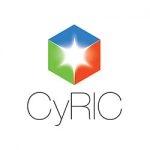WARP project aims to offer a novel water pretreatment product to the pressing problems of water quality monitoring and compliance with revised stringent regulations. The key objective is advancing water sampling enrichment methodologies, to rapidly and efficiently preconcentrate viruses and bacteria, in-line in the water chain, for timely preventing outbreaks. This will be achieved via research, development and filed validation of novel methodologies to preconcentrate viruses and bacteria within large volumes of water, followed by DNA extraction, and further combining these methodologies for the first time in the automated WARP system.
CyRIC: As the coordinator CyRIC will be responsible for the overall project coordination (WP1) and will lead the Dissemination and Commercialisation Planning activities (WP2). Also, CyRIC participates in all scientific and technological WPs and will be mainly responsible for the design and development of the WARP subsystems and the final system integration.
 CUT: CUT will mainly participate in the work packages WP4, WP5 and will be mainly responsible for the validation and quantification measurements and the experimental investigation of the proposed methods, as well as, for the system’s performance validation. Validation methods such as qPCR and plaque assays will be used.
CUT: CUT will mainly participate in the work packages WP4, WP5 and will be mainly responsible for the validation and quantification measurements and the experimental investigation of the proposed methods, as well as, for the system’s performance validation. Validation methods such as qPCR and plaque assays will be used.
 WDD: WDD will be actively involved to WP5 by providing access to water treatment facilities, targeting to validate the device at different water samples, wastewater and treated wastewater. They will also by strongly involved in the dissemination activities (WP2). In general, they will have an advisory role in the project, contributing also to the initial WPs for providing feedback as users of the device.
WDD: WDD will be actively involved to WP5 by providing access to water treatment facilities, targeting to validate the device at different water samples, wastewater and treated wastewater. They will also by strongly involved in the dissemination activities (WP2). In general, they will have an advisory role in the project, contributing also to the initial WPs for providing feedback as users of the device.
 TUM: TUM will be actively involved to WP3, where will be responsible for the development and production of MAF filters and for the design of the MAF-based DNA extraction. Also, TUM will strongly contribute to WP4 and WP5 mainly with an advisory role based on the extended experience and expertise with the MAF methodology.
TUM: TUM will be actively involved to WP3, where will be responsible for the development and production of MAF filters and for the design of the MAF-based DNA extraction. Also, TUM will strongly contribute to WP4 and WP5 mainly with an advisory role based on the extended experience and expertise with the MAF methodology.

“The Project is funded by the European Union Recovery and Resilience Facility of the NextGenerationEU instrument, through the Research and Innovation Foundation”.

